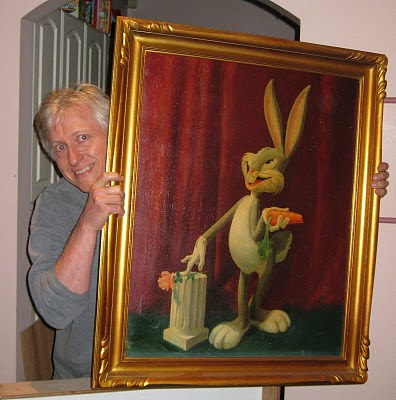

 While there are nice bits of animation in this sequence, this section is really dominated by story and layout. The way in which the audience learns that Dumbo can fly is quite inventive. Rather than see a take-off, the screen is obscured with dust, Timothy is convinced they've failed and then the audience sees Dumbo's shadow on the farmlands below.
While there are nice bits of animation in this sequence, this section is really dominated by story and layout. The way in which the audience learns that Dumbo can fly is quite inventive. Rather than see a take-off, the screen is obscured with dust, Timothy is convinced they've failed and then the audience sees Dumbo's shadow on the farmlands below.This image is one that could only exist in a period when commercial air travel existed or the audience (and the artists) could never have conceived of such a shot.
The other great piece of layout is shot 28, where Dumbo lands on the phone wires. That's another shot that depends on the widespread use of a technology. Will future audiences understand what those wires are when all they know is cell phones? I'm assuming that Don Towsley animated the bending poles. It's a thankless task; what could be more boring? Yet the shot always gets a laugh.
Towsley's Dumbo still has a pinched face, where the features are too low on the head. Walt Kelly gets another couple of crow shots, but I've yet to see evidence, much as I admire him, that Kelly was more than a second string animator. He was right to leave the studio for greener pastures. Ward Kimball and Fred Moore get the personality shots here, but neither does work that's up to the previous sequences. The same is true for Tytla's lone shot. That's due to the story material more than their animation.
Michael Ruocco, a sharp-eyed animation student, found a series of Fred Moore drawings from a deleted scene in this sequence and shot them. Here they are:
It's shot 30, though not the entire shot. You can lip read Timothy saying, "Dumbo! I knew you could do it!" The balance of the dialogue, not in this clip, is, "Now our troubles are over. Ho-ho!" The crows apparently agree to keep Dumbo's secret in this shot (as voice over) and shots 31 and 32. The final shot of the mosaic doesn't exist on the draft, though it is very likely by Ward Kimball.

















